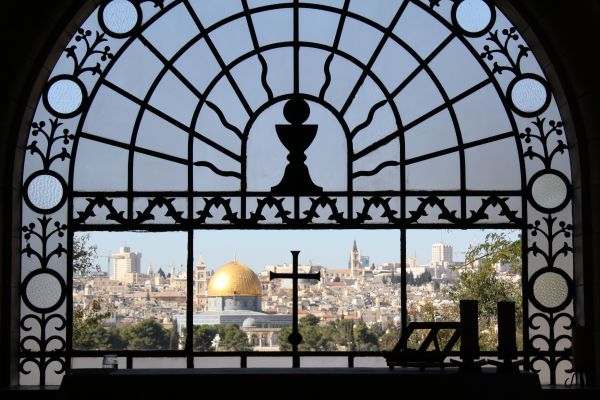Every Easter growing up I would hear the song “Jerusalem, My Destiny,” which connected the city with Christian tradition. The tune took on a new meaning when I saw my first view of the Jerusalem skyline and its cream-colored buildings of Jerusalem stone and the arresting golden Dome of the Rock. On my walking tour of the ancient city, I met reminders of religion around every corner with black-clad Orthodox Jews with side curls, muezzins’ five-time daily singing call to Islamic prayer and tolling church bells.
At the 1924 Church of All Nations, hundreds of years old gnarled olive trees encircle the basilica, which sits atop Gethsemane – where Jesus prayed the night before his death. Huge mosaics portray images from scriptures surrounding Gethsemane on the ceilings of the church. Afterwards, I entered the tall stone gates to the Old City to wander through more Christian history along the Via Dolorosa trail past the stations of the cross. The trail ends at the Church of the Holy Sepulcher, which many believe sits atop Golgotha, or the Hill of Calvary, where Jesus was crucified. The darkly lit Greek Orthodox church leads pilgrims through different chambers venerating the place of the crucifixion and the first-century tomb believed to be Christ’s.
Later, I explored the most beloved Jewish holy site at the Western Wall, which Herod the Great originally constructed in 19 B.C.E. It stands close to the location of the Second Jewish Temple destroyed in 70 C.E. According to Orthodox Jewish customs, the site is divided by a barrier separating men and women so they can both walk up to pray and place written requests in the cracks of the wall. With the Dome of the Rock visible on the other side of the wall and other Christian churches not far off, the area remains at the epicenter for three of the world’s major religions.

Jerusalem skyline from the Dominus Flevit Church

Church of the Holy Sepulcher

Western Wall









